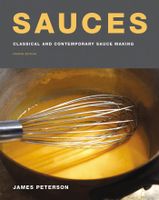Advertisement
Hydrocolloids
Published 1991

Most hydrocolloids are similar to more traditional thickeners such as flour or cornstarch in that they are composed of a chain of linked-together sugar molecules. When added to liquids such as water, the long chains unravel, tangle up, and, sometimes with the aid of heat, thicken the liquid. Some hydrocolloids are proteins and function in a similar way as sugar-linked chains except that a protein hydrocolloid will form long chains of amino acids instead of sugars. Each hydrocolloid has its own characteristics and needs to be handled in its own specific way. A hydrocolloid must first be dispersed in water. Usually, but not always, this involves agitating the hydrocolloid (usually a powder) by hand or with an immersion blender or rotor-stator homogenizer. (B, C)

